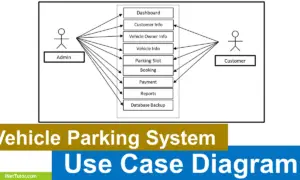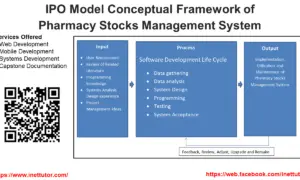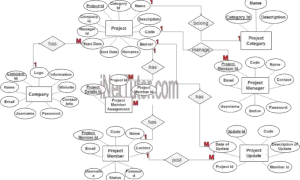Conceptual Framework of Virtual Reality Earthquake Drill
Natural disasters such as earthquakes can strike anytime and anywhere, leaving behind devastating consequences. It is imperative to be prepared and equipped to respond to such emergencies. The traditional earthquake drills conducted in schools and workplaces may not provide the necessary level of readiness. To address this concern, the concept of Virtual Reality (VR) Earthquake Drill has emerged, providing a more realistic and immersive experience to train individuals in disaster response. In this blog post, we will discuss the conceptual framework of the Virtual Reality Earthquake Drill using the Input-Process-Output (IPO) model, and how it can contribute to disaster preparedness and response.
About the Project
Table of Contents
Schools and other organizations frequently hold earthquake drills on a regular basis to teach students and the community how to react before, during, and after an earthquake. The objective of an earthquake exercise is to teach students and the community how to react quickly and appropriately in the event of an earthquake. The basic components of earthquake drills include classroom lectures, demonstrations, and exercises meant to assist students learn and practice where to seek shelter and how to protect their heads and bodies from items. The typical method of doing earthquake drills is face to face, which is not ideal because it does not appear realistic and many students do not take it seriously. The old method also necessitates a significant amount of time and effort from the seismic drill participants. The researchers proposed the capstone project “Virtual Reality Earthquake Drill” to address this issue. This technology will be used to give earthquake drill participants a virtual reality experience of what it’s like to be in an earthquake. They can save time and effort this way.
Objectives of the Study
The general objective of the research study on Virtual Reality Earthquake Drill is to develop a more effective and immersive earthquake preparedness training program using virtual reality technology. The study aims to provide a safe and controlled environment for participants to experience earthquake scenarios and improve their responses to such events.
Specific Objectives:
- To develop a more engaging and interactive way of conducting earthquake drill through the use of virtual reality technology.
- To improve the level of disaster preparedness and response of individuals and communities, particularly in earthquake-prone areas.
- To provide a realistic simulation of an earthquake scenario and teach participants the proper response and safety measures.
- To design and integrate a user-friendly virtual reality interface that can be easily accessed and operated by participants.
- To conduct a comprehensive evaluation of the system’s effectiveness in terms of improving earthquake drill outcomes and overall user experience.
What is a Conceptual Framework?
A conceptual framework is a structure that outlines the underlying concepts and theories that guide a research study or project. It serves as a map or blueprint that provides a clear understanding of the project’s goals, objectives, and methodology. The purpose of a conceptual framework in a capstone project is to provide a clear and concise representation of the project’s objectives, scope, and limitations. It helps project developers to identify the key factors that will affect the project’s success, such as the technology, resources, and stakeholders. In the development of the Virtual Reality Earthquake Drill, the conceptual framework will guide the development team in defining the project’s objectives and requirements, identifying the necessary resources and technologies, and evaluating the project’s effectiveness and impact. It will also provide a clear understanding of the challenges and limitations of implementing a virtual reality-based earthquake drill.
Conceptual Framework Diagram
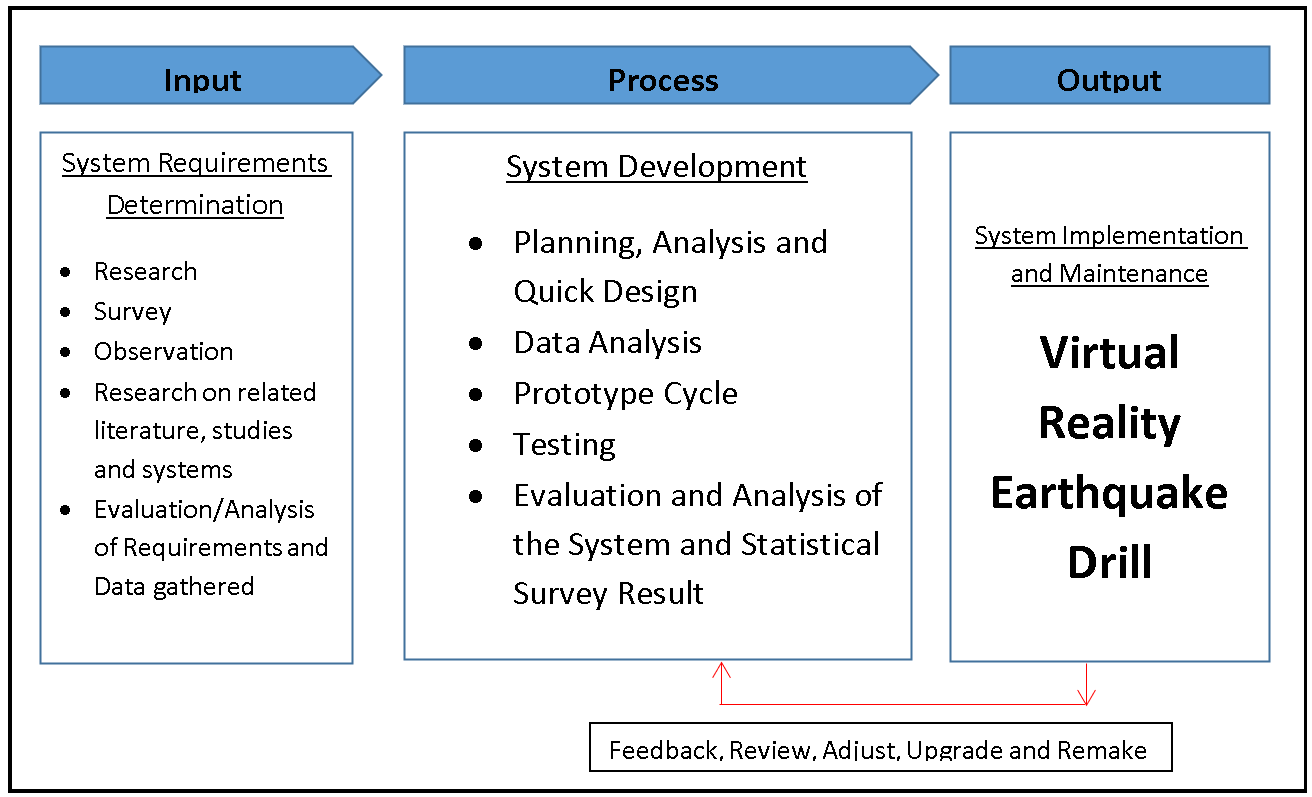
The Conceptual Framework Diagram of the Virtual Reality Earthquake Drill is given above. The IPO Model is used to construct the Conceptual Framework for the capstone project Virtual Reality Earthquake Drill.
Input
The project will start with an appraisal of the current approach, then go on to research, surveys, and observations. In addition, the researchers must collect important publications and systems to serve as a guide for the project’s advancement. After this process is completed, the researchers will review and analyze the requirements and data collected.
In the input phase of a conceptual framework, the following components have the following meanings and purposes:
- Research – Refers to the process of collecting information or data through primary or secondary sources such as interviews, experiments, and case studies. This helps in identifying the current situation and existing practices related to the topic of the project.
- Survey – Involves gathering data through a standardized set of questions or instruments to a specific group of individuals. This is useful in gathering opinions, perceptions, and attitudes towards a particular topic or issue.
- Observation – Refers to the systematic process of watching and documenting events or phenomena as they occur. This method is useful in gathering real-time data on behavior, practices, and interactions in a specific setting.
- Research on related literature, studies, and systems – This refers to the process of reviewing previous studies, research papers, and systems related to the topic. This helps in identifying gaps, trends, and best practices that can be incorporated into the project.
- Evaluation/Analysis of Requirements and Data gathered – Involves analyzing and evaluating the data collected from the previous steps. This helps in determining the requirements and identifying the gaps that need to be addressed in the project. This also ensures that the project is aligned with the goals and objectives set for the study.
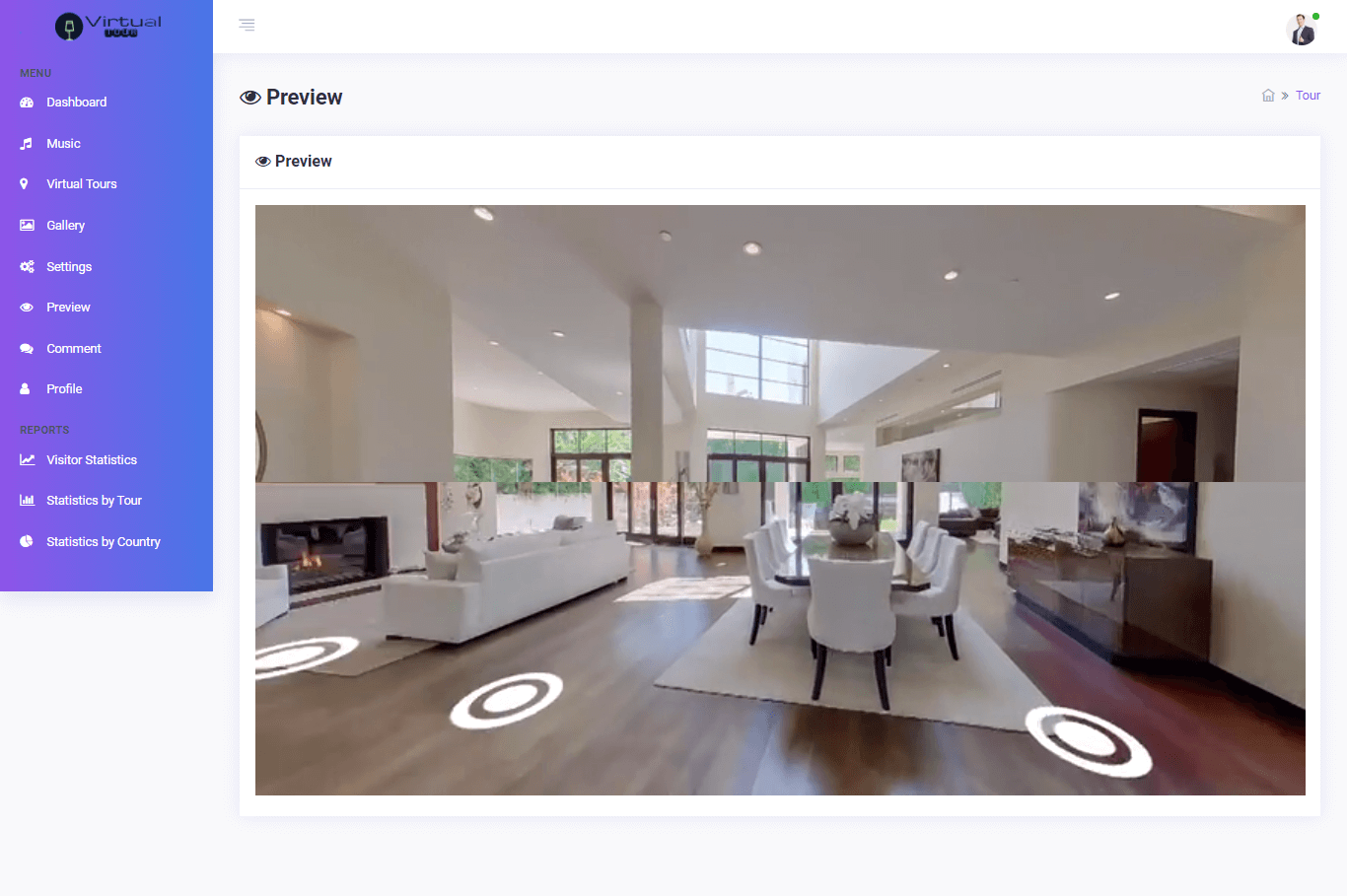
Process
Analysis and Quick Design
The researchers conducted a personal interview with the respondents and the chosen client where the study was conducted during Analysis and Quick Design. Respondents were given the opportunity to make suggestions on how the system should be designed. Following data collection, the researchers created an initial design for the proposed system.
Data Analysis
All data, user requirements, and information will be analyzed by the researchers. This phase also allows the researchers to gain an understanding of how to build the system and how the suggested system would benefit the clients.
System Design
The researchers will begin work on the proposed system. It contains the design; how the system would look depending on user requirements, and any personal design that the researchers/programmers would like to add to make the system more interactive and user pleasant.
Prototype Cycle
This stage will consist of the researchers’ data being compiled, built, demonstrated, and refined. The researchers create a prototype first, based on the planned design and data tables. The prototype will be shown to the client after it has been built. The researchers demonstrate the system’s operation, the flow of how it operates, and the functions of the system’s features. The next stage is refining, in which the researchers will fine-tune the system based on the client’s extra requirements. Changes to the features flow and functionalities will be made based on the needs.
Testing and Evaluation
This will include the feed backing of the proposed system after it will be implemented and had undergone testing by three Experts. It will also inform the researchers and the developer if there are any bugs, suggestion and if the system’s functionality will works well.
This will discuss the implementation of the propose system wherein Three (3) Experts will evaluate the propose system. This will also discuss if the recommended functions and suggestion are met.
Output
After all of the necessary procedures have been completed, the project comes to life and is carried out in the real world. A new project is born, and it will be maintained for the long-term existence of the project. The Virtual Reality Earthquake Drill will be put in place and used.
The output phase of the Virtual Reality Earthquake Drill project involves the implementation of the system, installation in the live environment, and the subsequent update or upgrade of the system. This phase aims to make the system available to the users and stakeholders. The implementation of the system involves the actual installation of the software and hardware components, configuring the system, and testing it in a live environment to ensure it meets the requirements and specifications. The installation process should be done systematically and meticulously to ensure that the system functions correctly. Once the system is implemented, regular updates and upgrades should be performed to maintain the system’s efficiency, effectiveness, and security. The system update process includes fixing bugs, adding new features, and improving the overall system performance. This phase ensures that the Virtual Reality Earthquake Drill system is up-to-date, reliable, and efficient in responding to earthquake emergencies.
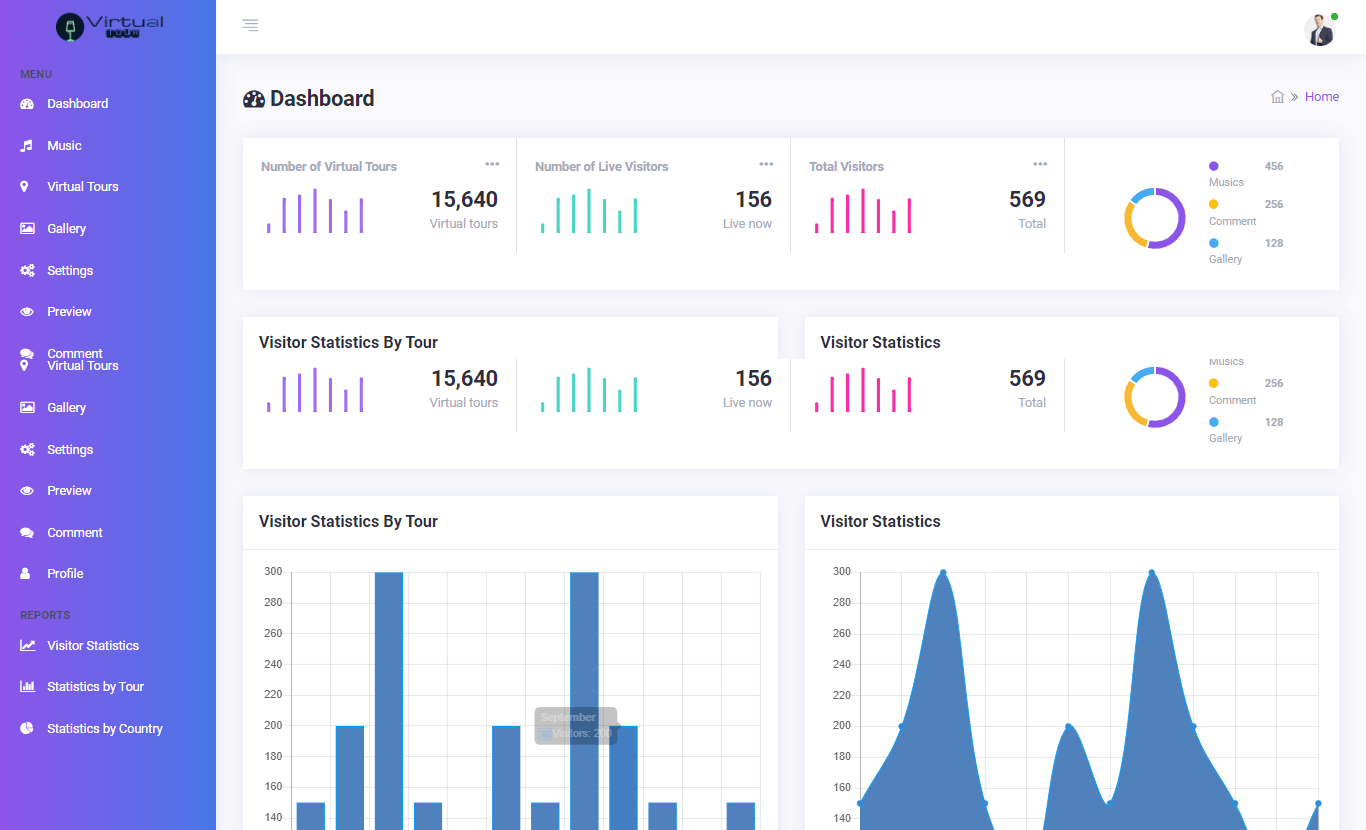
Summary
The blog post on Virtual Reality Earthquake Drill Conceptual Framework discusses the different phases of the project development cycle, specifically the input, process, and output phases using the Input Process Output (IPO) model. The IPO model is used to guide the development of the Virtual Reality Earthquake Drill project, which aims to enhance earthquake preparedness and response in the community. The input phase involves gathering data through research, surveys, observations, and related literature. In the process phase, the gathered data is analyzed and used to design and develop the system using virtual reality technology. Finally, the output phase involves implementing the system, installing it in the live environment, and updating or upgrading it as needed. Overall, the IPO model helps ensure that the Virtual Reality Earthquake Drill project is developed efficiently and effectively, with the goal of improving community disaster preparedness and response.
Readers are also interested in:
- List of 55 Best IT Capstone Projects on Business Administration and Management
- Information Systems Database Design and Model Examples
- New and Unique Thesis and Capstone Project Ideas for Information Technology
You may visit our Facebook page for more information, inquiries, and comments. Please subscribe also to our YouTube Channel to receive free capstone projects resources and computer programming tutorials.
Hire our team to do the project.
